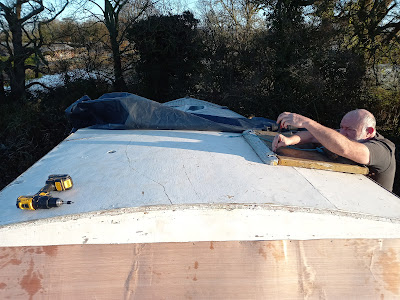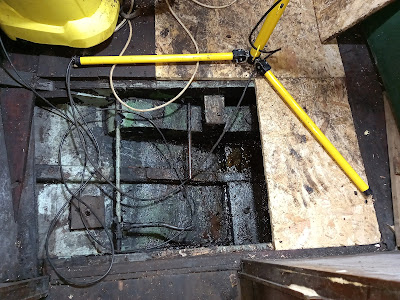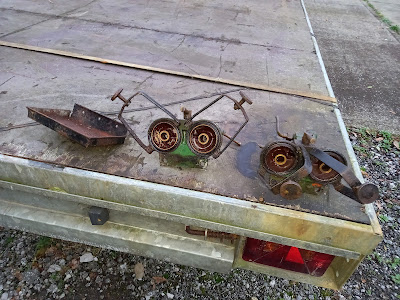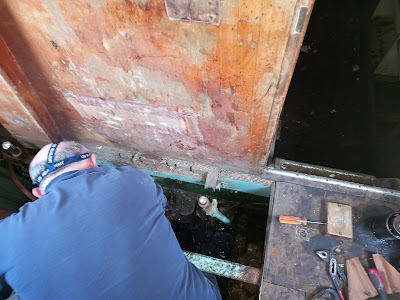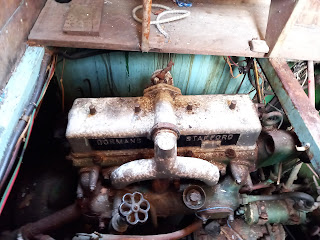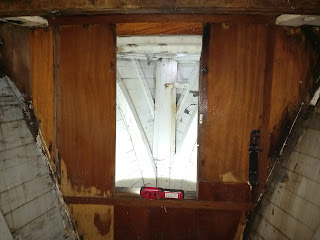Back at home base, the boatyard workshop
This morning was spent unloading the trailer and sorting out the workshop having off loaded the van on Sunday morning of all the bits and pieces I had loaded in the van and trailer for the trip back from Woodplumpton on Friday afternoon which then turned into night after being holed up in a two and a half hour traffic jam on the motorway home. So I was not bested please having left early from Woodplumpton to then be held up on the drive home. The bits and pieces which I had off loaded out of the van was the drawers and the rest of the doors out of the fore and aft cabins and the galley area. The only doors left on the boat are the main cabin settee doors which I have not been able to remove has yet, A job for next time I go to Woodplumpton to work on the boat. Also offloaded my tools and wood that I have bought to do the replacement floorboards when I get a can to unscrew the original floorboards and replace them with the wood I purchased to replace them. So this morning was spent

